Jim Keltner on George Harrison and the ‘Bangla Desh’ Concert
by Harvey Kubernik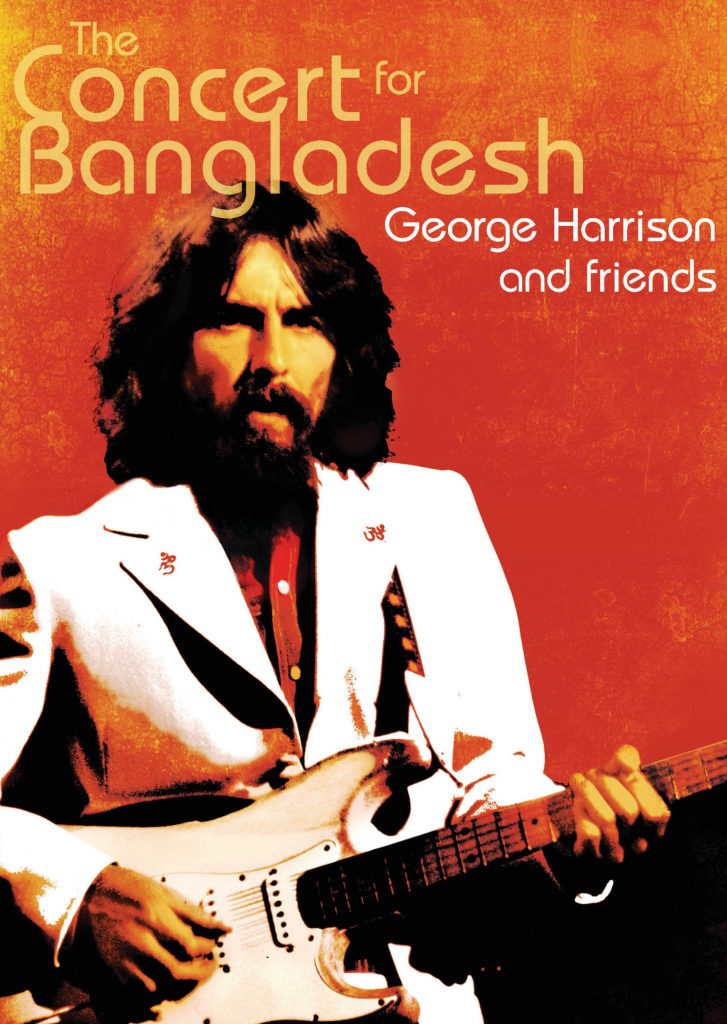 Jim Keltner’s drumming can be found on recordings by John Lennon, Yoko Ono, B.B. King, Johnny Rivers, Freddie King, Phil Spector, Jesse Ed Davis, Albert Collins, Joe Cocker, Dave Mason, Leon Russell, Neil Young, Harry Nilsson, Buddy Guy, Jerry Lee Lewis, Roy Orbison, Pops Staples, Steely Dan, Bobby Womack, Elvis Costello, Tom Petty, George Harrison, the Traveling Wilburys, Robbie Robertson, Brian Wilson, and the Rolling Stones, among hundreds of others. He’s toured with Mad Dogs and Englishmen, Eric Clapton, Simon and Garfunkel, and Crosby, Stills, Nash and Young.
Jim Keltner’s drumming can be found on recordings by John Lennon, Yoko Ono, B.B. King, Johnny Rivers, Freddie King, Phil Spector, Jesse Ed Davis, Albert Collins, Joe Cocker, Dave Mason, Leon Russell, Neil Young, Harry Nilsson, Buddy Guy, Jerry Lee Lewis, Roy Orbison, Pops Staples, Steely Dan, Bobby Womack, Elvis Costello, Tom Petty, George Harrison, the Traveling Wilburys, Robbie Robertson, Brian Wilson, and the Rolling Stones, among hundreds of others. He’s toured with Mad Dogs and Englishmen, Eric Clapton, Simon and Garfunkel, and Crosby, Stills, Nash and Young.
Keltner, born April 27, 1942, has also performed on countless live dates for a variety of artists—he recently completed a European tour with Bob Dylan.
I spoke with the drummer and percussionist the week his good friend George Harrison died, in November 2001. We were slated to meet and eat anyway in Keltner’s Los Angeles area home, and to discuss the re-release of The Concert for Bangla Desh album, which Harrison was working on at the time of his unfortunate passing. Keltner and Ringo Starr were the drummers for the historic charity event in 1971.
Jim and his wife Cynthia were extremely close to Harrison, and in this painful time of grieving and reflection, it’s to Jim’s credit that he extended himself to me as we jointly examined his working relationship with Harrison in conversation.
Portions of our discussion appeared in my book This Is Rebel Music: The Harvey Kubernik InnerViews.
Best Classic Bands: How did you first meet George Harrison?
Jim Keltner: It was in London, early 1971, at a Leon Russell session at Island Studios. George and Phil Spector and Klaus Voormann were all playing acoustic guitars together.
George totally dug Delaney and Bonnie’s first album (Home, 1969), and he wanted them for Apple Records. I’ve even seen some acetates or Apple label copies of Delaney and Bonnie for the U.K. market. But you also told me John Lennon was into that record.
Yes. I believe George turned John on to the record. George was also a huge fan of Ry Cooder, and that was a thing we had in common. He loved Ry and Bob Dylan. He was a great champion for all of us. After the earthquake in February of 1971 in Los Angeles, I told my wife, “Get the kids together and get on over here.” We were there [London] at a flat in Chelsea for a couple of months. During that time, George introduced me to Ringo and I played maracas on the single he produced for Ringo at Trident Studio, “It Don’t Come Easy.”
George and John were tight with Phil Spector.
George and John both loved Phil. They loved his previous work, and they wanted a little piece of that. They wanted to see what it would be like working with him. George was really on top of it during that time. He was very clean and doing the worry beads and all that. He was probably at his physical best at that time. He was always talking music. I learned a lot from George about the American rock scene. He introduced me to my own scene. That happened because I wasn’t familiar with it. I wasn’t into rock ’n’ roll. I came out of jazz in the ’60s. George was a very important teacher to me at that time.
Can you describe the recording of the “Bangla Desh” song?
George called and said, “Let’s do a single.” So we went into Wally Heider’s Studio 4 on Cahuenga (in Hollywood) and did “Bangla Desh” with George and Phil. Leon played and I think he helped arrange the song. The birth of the concert sort of started with this single. I loved the song. Then later we did two shows at Madison Square Garden in New York. For [the concerts], there was only one rehearsal, in a basement of a hotel, or near the hotel. George was beside himself trying to put together a set list and trying to find out if Eric [Clapton] was going to be able to make it, whether Bob [Dylan] was gonna make it. Plus, George was nervous because he hadn’t played live for a long time. He did a fantastic job. It was a benefit for a good cause and the first time I ever played Madison Square Garden.
Was it pre-determined that you were to double drum with Ringo at Bangla Desh?
Well, I think Ringo was asked by George, and Ringo said, “Yes, but only if Keltner will do it with me.” Ringo was a little unsure about playing live with a big band. He hadn’t played live in a while, either. So, when they asked me, I said, “Of course, but I want to stay out of his way.” I didn’t want to destroy anything of that great feel or his sound. When we actually sat down to play, I asked them to set me up in such a way that I could see his hi-hat hand. And after we played together at the sound check, I had to decide on a few things. One of the first decisions I made was to not play the hi-hat much. So I played the hi-hat like I had seen Levon [Helm] of The Band do, which was to pull the hand off the hi-hat for the two and four, so that it didn’t come down with the backbeat at the same time. And that helped me stay out of Ringo’s way. But years later the cameraman told me, “You really caused me some problems when I was editing that film, because your hand coming up like that, I could never tell whether I was on the cut.”
How was George as a bandleader at Bangla Desh?
He was absolutely focused and fantastic as a leader. Of course, he had Leon in the band. Leon helped with the arranging and all.
Once you hit the stage and began playing, how was the audience response?
When we started playing with the audience in the room, it really did come alive. George seemed very powerful that night. When you look at the picture of him then, he was really thin. But he was very powerful, and the songs—”My Sweet Lord,” “Awaiting on You All,” “Beware of Darkness,” “While My Guitar Gently Weeps,” “Wah-Wah,” “Bangla Desh”—some great stuff. And don’t forget Billy Preston with “That’s the Way God Planned It.” I loved being a part of that with George.
You ended up touring with George and Ravi Shankar in 1974.
That was another thing that George brought to my life, meeting Ravi Shankar and the great [tabla drum master) Alla Rakha and being able to hang out with them on the plane and at the gigs.
You had to have seen every minute of Ravi Shankar’s set at Bangla Desh.
Oh yeah! I was right in the back watching the whole thing and being amazed at just how powerful it was. I had been listening to Ravi and Alla Rakha for years and here I was seeing them up so close I could reach out and touch them. Alla Rakha and Ravi Shankar were telepathic. They played together for so many years, it was awesome to watch it. Ravi was at his peak in terms of technical proficiency. Alla Rakha was as well. It was dazzling. It is something that will always be with me. They did a longer set than what was actually recorded. Between shows the hotel had an incredible hospitality room set up with incredible Indian food.
Over the decades I got to see George and Ravi a lot together. It was a father and son relationship in a way. [George] brought Ravi to the rest of the world in a very big way. One of my favorite things was being with George in the audience watching Ravi play. The last time was a few years ago in London, sitting there next to George watching Anoushka [Shankar] play first, and dazzling everyone with her tremendous technique, and all these flashy things, and thrilling the audience. And then the old master, her father, makes everybody just sigh with a few well-chosen notes. It was a perfect picture of exactly what you need to learn about in life, about youth, age and wisdom, technique, soul and all that. George was at the wheel taking us there. I’ve been telling people recently that I really took George for granted, because he was just Georgie, my friend, my beautiful, wonderful brother. I read these things about him being kind of anti-celebrity and all that. I guess he had enough of that with the Beatles, so that the Bangla Desh event seems like a warm and wonderful cause that everyone turned out for and no one was making any money.
Bob [Dylan] walked right by me on his way to the stage. I had already recorded with him a couple of months earlier so I sort of knew him. He walks out there on the stage with that little jean jacket on and puts the harp up to his mouth and starts singing and playing and chills ran up and down my arms. His voice and the command. It was awesome. And Leon decides to go up with his bass for “Just Like a Woman” and play with him. It was a tremendous moment. It was real dark on stage with a little light for them. Dylan was incredible.
Do you know if John Lennon ever saw the Bangla Desh movie?
Yes, he did; one night at the Record Plant somebody asked John if he saw the film. John said he went to the premiere and when he saw my face on the screen for the first time he stood up and yelled, “Hey, that’s me drummer!” I fell on the floor.
You also did a lot of recording with George over the years, including the Traveling Wilburys. That record blew up beyond expectations.
How could you go wrong with Roy Orbison, Bob Dylan, Tom Petty, Jeff Lynne and George Harrison in the same band? Watching them write and come up with songs around a table at Dave Stewart’s home studio was fantastic, and something I’ll never forget. The way they would pass the ideas around the table was really hilarious.
Related: Our Album Rewind of the Traveling Wilburys’ Vol. 3
You also played on Harrison’s Cloud Nine album, and his last real hit single, “Got My Mind Set on You.” You used a drum machine on that track, right?
“Got My Mind Set on You” happened sitting around the studio one night. Jeff Lynne, George and I were talking about drum machines, and George and Jeff were saying they didn’t like drum machines because they couldn’t swing like a real drummer. I just happened to have my SP-1200 sampler there, making samples and stuff for my own project later. But I told them, “I can make it swing.” So I started this beat, and it was Gary Wright in the back of the room who said, “That sounds like ‘Got My Mind Set on You,’” and started playing the riff. He knew the James Ray song, and it went on from there. Everyone grabbed on to it. George actually started singing the lyric as much as he remembered, so I laid down the drum track in real time with my fingers on the pads. When I left they worked on it and next time I heard it was on the radio. The only song I didn’t play on (on Cloud Nine) was “When We Were Fab.” Ringo was on that. And he played beautifully as usual.
You and your wife Cynthia were close to George and his wife Olivia.
Cynthia and I met George when he was with Pattie Boyd. It was in 1971. Pattie was a truly wonderful lady. So when they broke up, I felt bad for George, because I thought, “Man, where do you go from there? How are you ever gonna come close to that again?” And then he met Olivia in 1974, and you could tell right away this was going to be it. They had such a great chemistry. At first, I thought she was this beautiful Indian woman but then I found out she was a Mexican girl. And I’m half-Mexican, so that endeared her to us even more. She was just exactly what George needed in his life. Her sister Linda was working for the label so we all spent a lot of time together.
How would you characterize George’s guitar playing?
Literally, every guitar player I’ve ever played with pays homage to George because they know what it’s like to be the guy coming up with the parts. The second most important voice in the song, aside from the singer’s voice, is the lead guitar, the way he frames the voice and how he plays the melody within the melody, the way he handles all those chores. That’s a special gift when you’re able to do that. George was probably one of the greatest that ever did that. Scotty Moore and Carl Perkins were his heroes. George was not an improviser. He was a songwriter type of guitar player. He saw the guitar part as a piece constructed in his head and he would construct it as he went along and came up with these brilliant parts that will live forever. I mean, any Beatles record you pick up you’ll see that. And, of course, any of his solo stuff as well.
Author Harvey Kubernik’s many music books are available here.

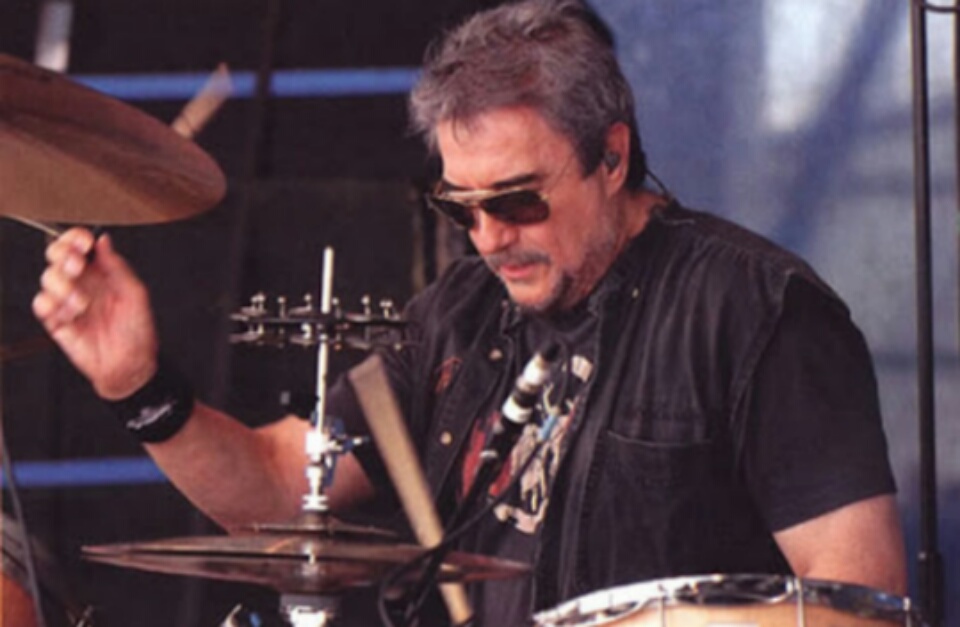
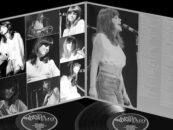
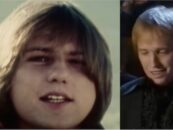
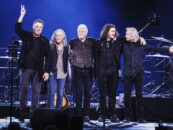


2 Comments so far
Jump into a conversationI have a little history with Jim Keltner .. One afternoon in the Echo Park district of Los Angeles, I met him at a mutual friends house .. Bob was great for throwing small parties. Conversation was easy we were all sipping Cognac and smoking and just having a great afternoon. We starting talking about music and Jim’s demeanor was that he was grateful for even getting to play with such well known musicians .. he was very humble considering what a monster he is on percussion .. Jim Keltner a truly gifted and very humble kind of guy .. just plain good folks and great to party with.
I went to the first one and still remember it today. What was funny was there was no encore, that had never happened at any concert I went to. Also they never turned the lights off! There was so many great people on stage and I was sure they would have an encore, nope! I remember it still, what a great day.